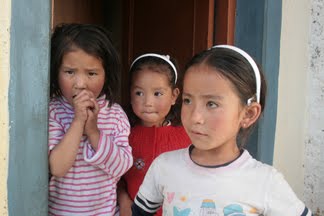http://www.betterphotography.in/showstory.php?storyid=297
Better Photography Dipali Banka Apr-2006
"When a photographer embarks on a journey with a camera,ostensibly to travel, one expects to see elements in the images that you will recognize or tell you about the place. The manner in which the subject is approached by the camera is what differs from photographer to photographer, like the vocabulary of storytellers. "
Peeyush Sekhsaria's travels to many places have translated into images that have a haunting and enduring play of light. And in his own style, he brings out the beauty of life and culture of the places he visits. Dipali Banka explores the mind of this photographer? "Most of my pictures have come from knowing the people, the place, feeling comfortable and being at ease in seeing," says Peeyush, a consultant architect based in Paris for architectural and heritage related projects across Asia, Europe & Africa. Photography for him has been a serious hobby, and his profession has helped him record the 'play of light' in many parts of the world.
Peeyush's photography began on a 'destructive note' though—a building was being razed in Pune, Maharashtra and he shot it. Later, he realized that the only proof of the existence of the building were his images, as everything else was just intangible memory. The graphic quality in his images come from his inclination towards architecture, which he graduated into. Peeyush moved on to France to pursue a Masters in Earthen Architecture and Sustainable Development, and went along capturing what he saw and perceived. Photography became a craft for him. He liked taking frames that otherwise woul have been overlooked but when shot separately got their notice. He took photographs of villages in Portugal and Mali, and went back there to exhibit the same.
"It was interesting to see the perception of the same people who were photographed. They had an intelligent way of looking at the pictures. They were very objective and did not really try and find themselves in the images. Rather, they analysed the photography by its frame, composition and the story behind the picture. They had quite a mature and contemporary way of looking at things," says Peeyush.His work took him to sites in Mali, Niger, Burkina Faso and Nigeria in Africa, and Uzbekistan in Central Asia. Initially he was quite wary of shooting people and uncomfortable getting into their space.
But during one of the trips to Africa, he noticed that the natives from West Africa were very interesting people to shoot. He decided to shoot them, but without breaking the natural flow of events and after having taken their permission. He was relaxed and made sure that his subjects knew that he was shooting them. Soon enough, the subjects got used to 'his fact' and were not alarmed with the presence of his camera. He managed to get some really interesting portraits.One of his architectural projects in Bukin Faso involved building of homes without the use of wood also called as homes from earth. He tried to use photography as a means of communication in order to convince the locals that mud homes are possible and comfortable for living.
It was important to actually show people living in them happily. Not only showing technical and architectural details but also documenting how people adapt themselves with the house."
Peeyush's images have universality in them. For him, photograhy is a lot about anticipation of light and shadows. He analyses the light and visualizes frame under different lighting conditions. To sum up Peeyushs' thoughts in the words of Martin Buber, "All journeys have secret destinations, of which the traveller is unaware."



No comments:
Post a Comment